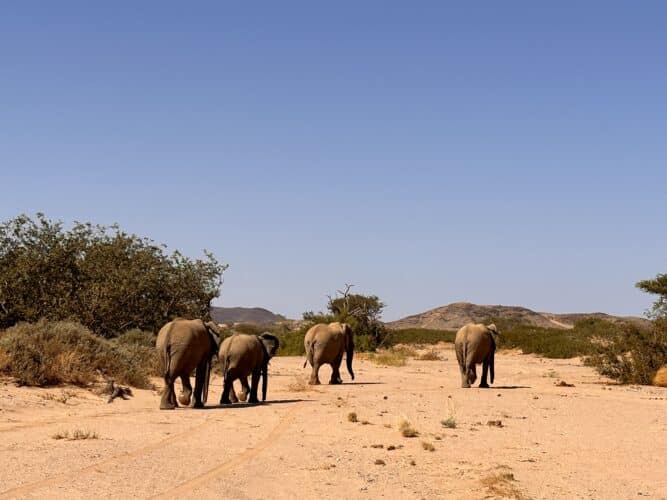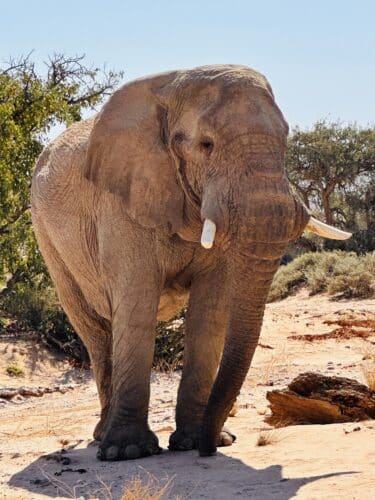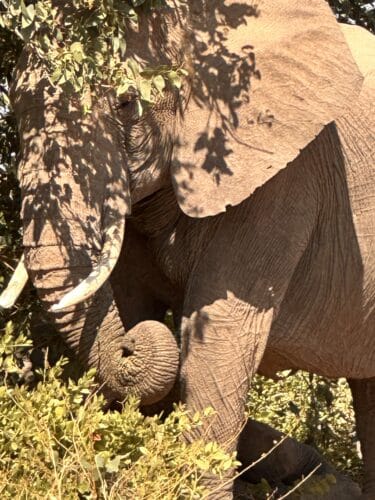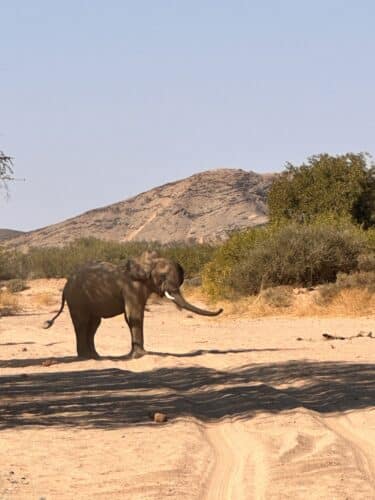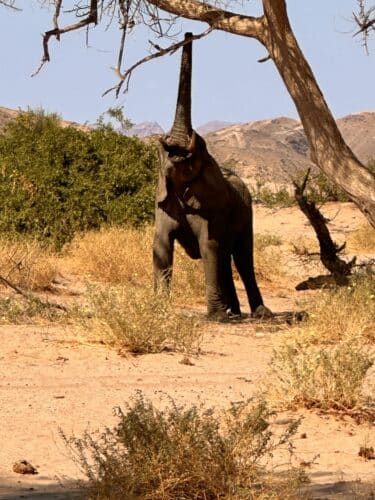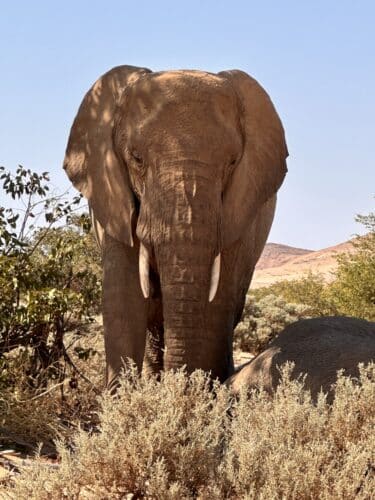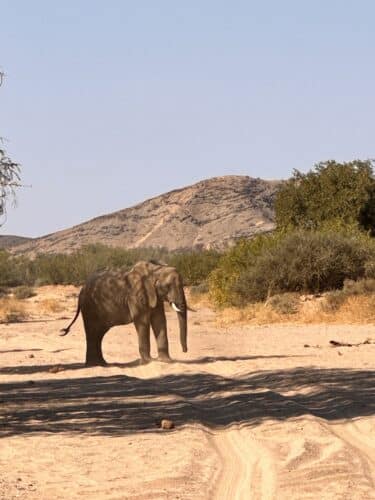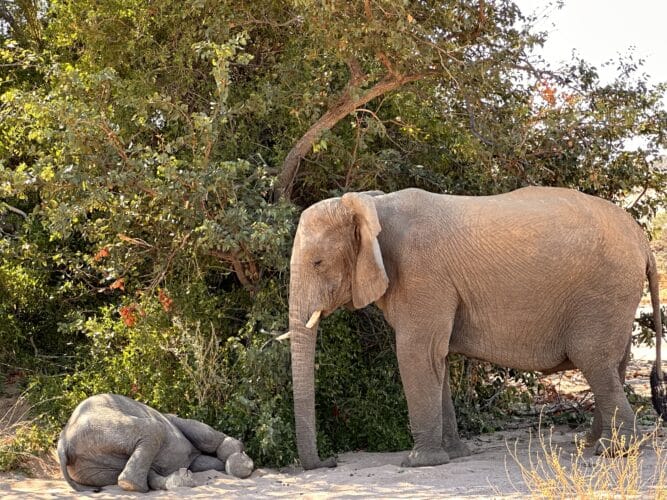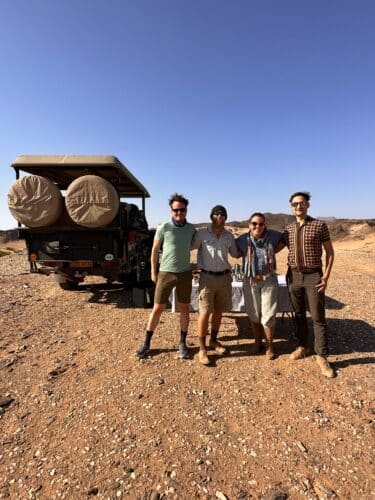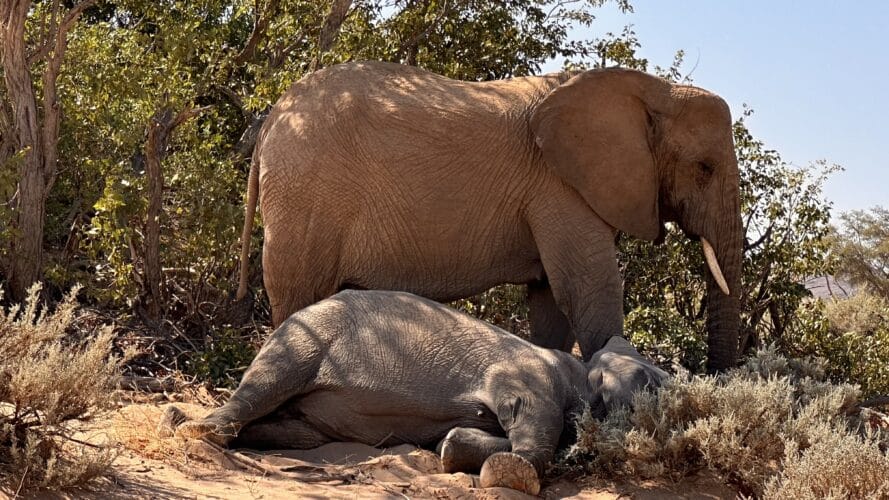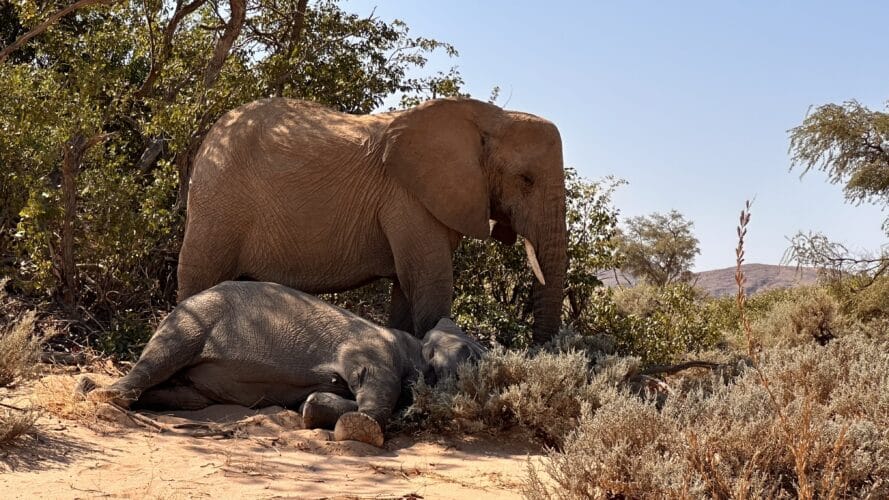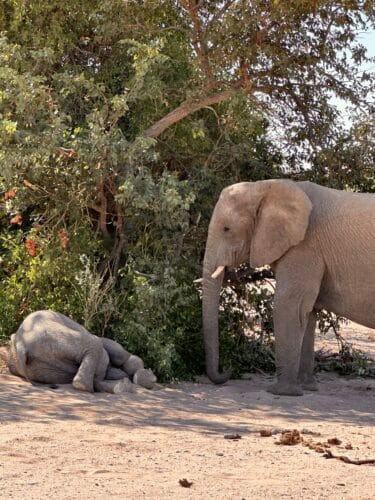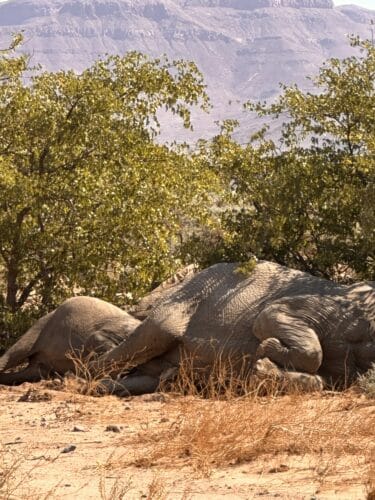Game drives in search of desert-adapted animals
I’ve been lucky enough to visit Southern Africa a few times and, without any doubt, the highlights of each trip have been the game drives. They are simply one of my absolute favourite things to do in the world. There’s nothing like the endless horizons, the incredible light, the empty space and solitude, and of course the chance to witness the most extraordinary animals in the wild.
But I’ve never before gone on a game drive in search of desert-adapted animals. That was all about to change on a recent trip to Namibia, when we visited Damaraland, a region famous for its rugged, arid beauty.
It’s also famous for its desert-adapted wildlife. There are all sorts of plains game and predators, but it’s the desert-adapted lions, elephants (yes, you heard me right!) and critically endangered black rhinos that are the real drawcard in this remote and remarkable part of the world.
Against the odds they’ve found a way to adapt and survive in this exceptionally dry environment. They have to roam vast distances in search of food and water – and so you have to be prepared to drive vast distances in order to find them.
We were guests at Onduli Ridge, a luxurious and contemporary safari camp in a spectacular location. It sits on a private concession in the Doro Nawas Conservancy. This means “the place where rhinos roam” in the Khoekhoe/Nama language, so it’s no surprise that tracking the desert-adapted elephant and black rhino are high on people’s wish-lists when staying here.
This is the world’s last population of free-roaming black rhino – and you can even track them on foot, but it’s only possible if you stay at Onduli Ridge for three nights or more… and we were there for just two and went out in search of rhino and elephant!
Focusing on the desert elephants Namibia
We would have loved to see the desert lions, and kept our eyes peeled the whole time we were there, but there are a very few of these critically endangered creatures around, and you have to be really lucky to see one of them. Therefore, on our brief but beautiful stay at Onduli Ridge, we were putting all our hopes into finding desert-adapted elephants.
We headed off super-early on a 4×4 morning game drive, wearing a million layers but still feeling the cold on this freezing winter morning. Within a few hours, however, we’d stripped off to just t-shirts and were slathering on the sunscreen. We barrelled along bone-jarring corrugated dirt, taking the occasional shortcut across sealed roads, and stopping for morning coffees on a rocky cliff with a beautiful view of an enormous tree stretching out across a dry riverbed below. Later that day we would eat a gourmet lunch under that very tree.
Reaching the wide, dry bed of the Huab River, we followed it for 90 minutes or so, marvelling at the notion that the rivers in this region occasionally flood. This makes tracking wildlife impossible for a time, but also ensures hardy trees and plants survive – and that hardy animals have something to eat.
The wildlife gods were smiling on us, and it wasn’t long until we spotted an elephant, enjoying some solitary time under a shady tree. Desert-adapted elephants differ from other elephants in a number of ways. They have elongated limbs and broader soles (all the better to handle the sand and rocks), and can travel for kilometres in search of water… even going without a drop for up to four days.
They also do something else that apparently a lot of other elephants in the wild don’t do: they lie down to sleep. One minute our pachyderm pal was upright, and just moments later he was executing a practiced and very graceful flop, and breathing heavily in deep slumber. We watched the little ones too take to the sleeping position right in front of our eyes!
We left them to their desert dreams and continued along the dry riverbed, eventually coming across more and more elephants. Over the course of the next hour or two we witnessed adults stripping trees bare as they fed, babies napping under a mopane tree, and a huge bull in musth trundling along the river bed.
Googling “musth” on my return, I was rewarded with the following description: “Male elephants experience a biological phenomenon called ‘musth,’ which is characterised by increased testosterone production, temporal gland secretion and urine dribbling, heightened aggression and sexual behaviour.” Well, that explains the urine streaming down his back legs. And the other elephant that trumpeted loudly while charging us (and scaring the hell out of me – that video is definitely NSFW), but was in fact a female sending a very strong “No” message to the bull.
Later, we heard some more loud trumpeting. This time it was from a huge old bull, who was part of a group of sleeping elephants, all piled on top of each other in a great grey tangle. We couldn’t believe how nonchalant they were about his trumpeting… even though it wasn’t coming from the flatulent guy’s trunk and in their tangle they were very close to the action at the other end of his body!
Click to see our little encounter>
At one point, as we watched these amazing animals go about their daily activities, I asked our guide what would happen if I stepped down from the vehicle and walked up to an elephant. Now, I know staying in your vehicle is pretty much rule number one when it comes to safaris, but I was still harbouring a vague Disney princess hope, and that he’d tell me the elephant would become my special animal companion and we’d be BFFs forever.
What he actually told me? “He’d charge you, and then squash your head like a grape.” Gulp.
Our brilliant day ended with a fascinating and charming visit to a local community, where the children proudly dragged us around to show off their school rooms, and then that gorgeous lunch under the tree.
There are no guarantees when you’re tracking any wildlife in Africa, but this is especially true if you’re tracking Namibia’s desert-adapted animals. Not only are densities low, but they also have to roam huge areas to find water, which can result in very long drives to find them. With great guides and trackers, a lot of patience and a bit of luck you’ll hopefully see these majestic, endangered, wonderful creatures. And it will be all the more rewarding when you do.
